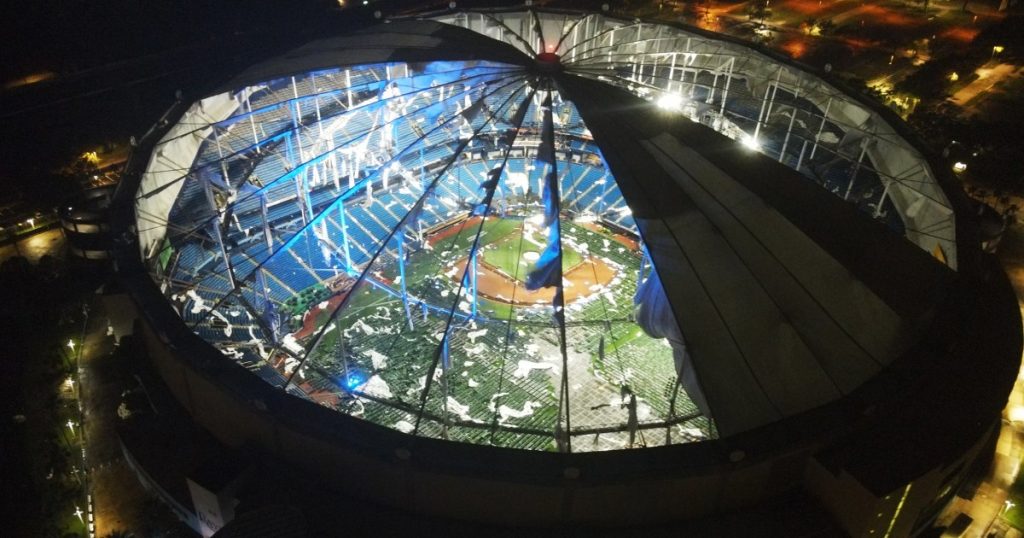Hurricane Milton caused severe damage to the roof of Tropicana Field, the home of the Tampa Bay Rays, as powerful winds exceeding 100 mph tore through the area overnight. Images of the stadium showed large sections of the roof ripped apart, raising concerns about potential interior damage. The stadium was set to be used as a base camp for emergency responders, with plans to support debris operations and post-landfall efforts in the wake of the storm.
The damage to Tropicana Field highlighted the destructive force of Hurricane Milton, which left a trail of destruction in its path. Emergency management officials were working to assess the extent of the damage and provide support to affected areas. The storm’s impact on the stadium raised questions about the ability of infrastructure to withstand extreme weather events, prompting discussions about the need for stronger building codes and disaster preparedness measures.
As the storm continued to batter the region, concerns grew about the safety of residents and the effectiveness of response efforts. The Florida Division of Emergency Management was monitoring the situation closely, providing updates on conditions and coordinating relief efforts. With thousands of people potentially affected by the storm, there was a pressing need for shelter, supplies, and assistance for those impacted by Hurricane Milton.
In the aftermath of the storm, the focus shifted to recovery and rebuilding efforts in the hardest-hit areas. Emergency responders worked around the clock to clear debris, restore services, and assess the extent of the damage. Tropicana Field, once a symbol of devastation, became a rallying point for the community as volunteers and officials came together to support those in need and begin the process of rebuilding.
Lessons learned from Hurricane Milton underscored the importance of preparedness and resilience in the face of natural disasters. The widespread damage caused by the storm served as a stark reminder of the destructive power of nature and the need for proactive measures to mitigate risks. The response to the storm highlighted the resilience and strength of communities coming together in times of crisis, demonstrating the power of unity and cooperation in the face of adversity.
As the recovery efforts continued, the focus turned to long-term planning and strategies to prevent similar disasters in the future. Discussions around climate change, infrastructure resilience, and emergency preparedness gained momentum in the wake of Hurricane Milton, sparking a renewed commitment to building safer, stronger communities. Tropicana Field, once a symbol of destruction, became a beacon of hope and resilience as the community came together to rebuild and recover from the devastation of the storm.


